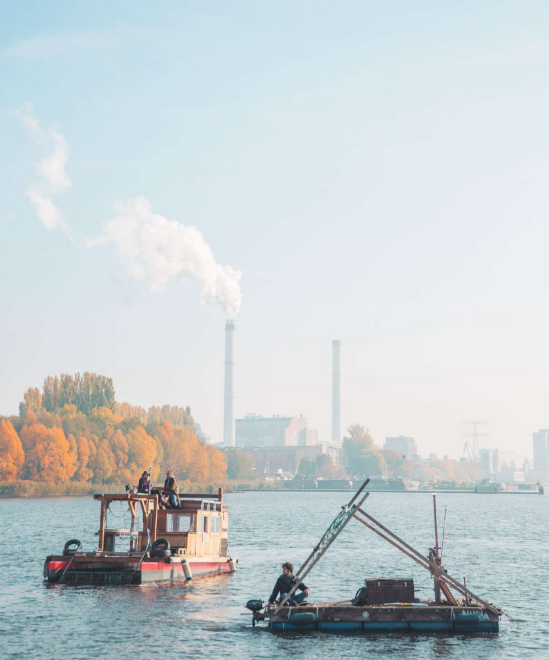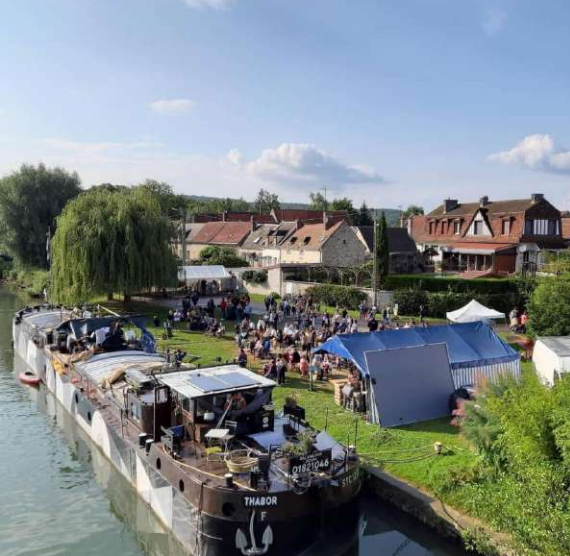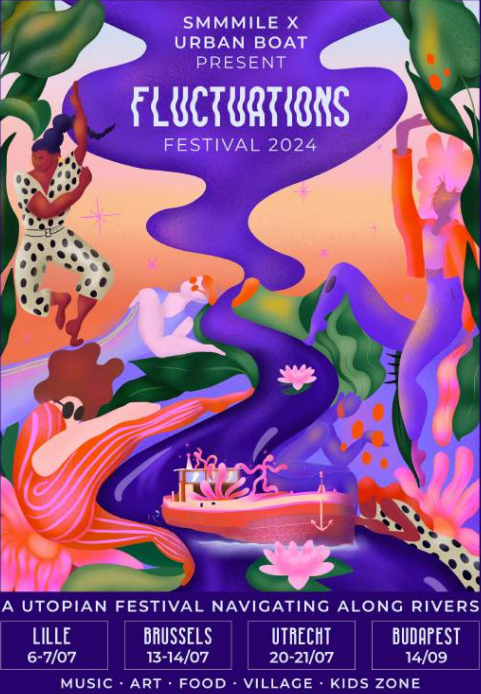Exploring Water as a Creative Space in European Cities: Insights from VibeLab’s Fluctuations Report
Water is an integral part of urban landscapes across Europe. It often covers around 5% of a city’s surface, and in places like Amsterdam, this figure can soar to as much as 35%. As urban spaces become increasingly congested, it’s essential to rethink how we utilize these aquatic areas, particularly for cultural and creative purposes aligned with environmental sustainability. The recent Fluctuations report by VibeLab, prepared for the Fluctuations Festival, dives into this subject, examining the potential of urban waterways as creative spaces.

The potential of waterways in urban landscapes
Water bodies within cities are not just scenic spots but are spaces that hold immense potential for cultural activities. These areas can serve as venues for community activations, concerts, art installations, performances, and more, questioning urban rivers’ prime function as traffic routes, claiming them as areas for recreation and environmental regeneration. The Fluctuations report highlights how thinking of these water bodies as accessible spaces for more mixed use is crucial, especially as land surfaces become increasingly scarce for cultural uses. At the same time, these sensitive biospheres challenge cultural organisers and audiences to adapt their practices in consideration of the natural environment.

Key findings from the Fluctuations Report
VibeLab’s study is the first to compare cultural practices on water across multiple European countries. Conducted in five countries and encompassing research on 36 cultural vessels, the report provides a comprehensive overview of how different cities and nations approach the integration of water into their cultural frameworks. Here are some key insights from the report:
- Stakeholders: The report gives an understanding of the variety of stakeholders involved in creative river transformation; from boat operators, event organisers, waterfront venues, and NGOs to local governmental institutions.
- Infrastructures: The infrastructure, especially mooring spaces at sites suitable for social gatherings, plays a significant role in the feasibility of hosting creative activities on water. The concept of ‘cultural harbors’ is presented in detail.
- Policies and Governance: The report examines existing policies and governance structures that impact cultural activities on water. It suggests that current regulations disregard and often restrict rather than facilitate creative uses of waterways.
- Creative River Policies: To better utilize these spaces, cities need to develop dedicated policies that encourage and support creative activities on water. This includes innovating waterway infrastructures and simplifying permit processes.
- Climate Change Considerations: With extreme heat becoming more common due to climate change, waterways are becoming increasingly attractive as cool retreats for urban residents. This trend underscores the importance of developing regulations that not only protect these areas but also promote their use for cultural and recreational purposes.
For more information, consult the Executive Summary of the report.

The role of water in shaping urban creativity
As Nicolas Dhers, CEO of the Fluctuations Festival, points out, “One result of climate change is that extreme heat will continue to increase in Europe and citizens will seek out areas by the water to cool down and spend their free time. Instead of developing regulations that merely restrict, we should understand them as tools to shape, to incentivise good practice and to go with the times.”
This perspective is crucial as cities look for innovative ways to integrate water into their cultural and creative landscapes.
